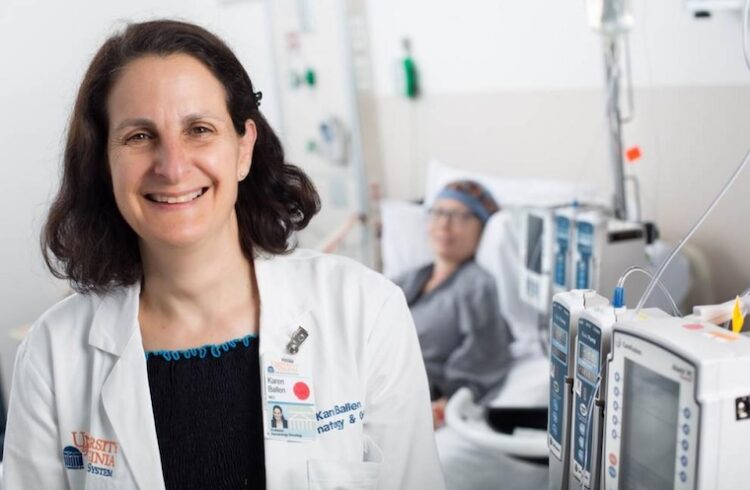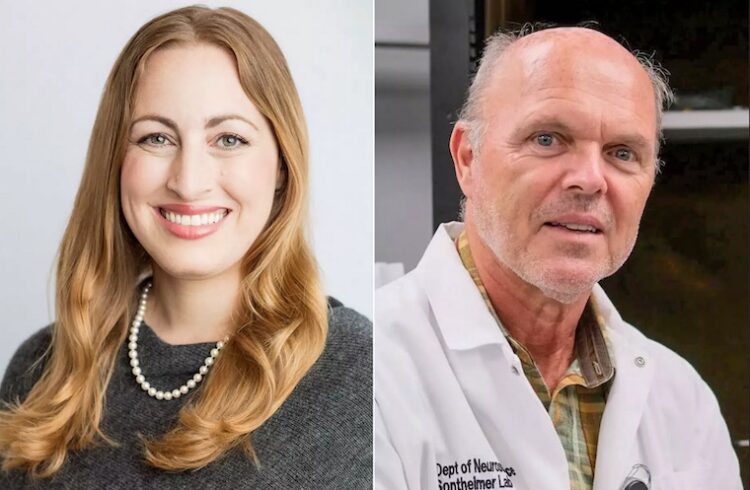
New research from the University of Virginia Health System shows that, when combined, two emerging medical technologies hold significant promise for treating the most deadly and devastating form of brain tumor, glioblastoma multiforme (GBM).
According to Jason Sheehan, M.D., a neurosurgeon and assistant professor of neurosurgery at the UVA School of Medicine, the use of controlled-released nanoparticles containing chemotherapeutic drugs and non-invasive ultrasound successfully helps to treat GBM tumors in mice.
Sheehan discussed the findings on May 4 during the annual meeting of the American Association of Neurological Surgeons (AANS). The association selected Sheehan for its 2009 Young Investigator Award in recognition of his outstanding potential as a researcher in the field of neuro-oncology.
During the study, Sheehan and his colleagues placed a cancer-killing drug inside nanoparticles affixed to microbubbles (which are the size of red blood cells) and injected the compound into the veins of immunocompromised mice. Carried by the bloodstream, the treatment travelled to the GBM tumor site. There, a 1 MHz dose of energy from the ultrasound equipment caused the microbubbles to burst and release the drug directly onto the cancer cells. Results show the treatment reduced tumor cell viability in a significant fashion and compared favorably with an anti-cancer drug, administered to the study’s positive control group. The UVA study also showed ultrasound induced damage to the microvessels feeding the tumor.
“Many drugs that kill GBM cells in vitro prove ineffective in living organisms because they are not able to penetrate the blood brain barrier,” noted Sheehan. “These new technologies are allowing us to overcome this challenging problem and deliver a highly targeted and sustained release of chemotherapy drugs. Although more research is needed, our findings indicate the technologies hold significant promise for patients with high grade gliomas and other malignant brain tumors.”
Sheehan’s research is on-going and is being performed in collaboration with his study co-authors, Caitlin Burke, BS, a graduate student in the UVA School of Engineering and Applied Science and Richard Price, PhD., a biomedical engineer in the UVA School of Medicine. Their research is funded by multi-year grants from the Hartwell Foundation.
“I’m honored to receive the 2009 AANS Young Investigator Award,” Sheehan says.
Sponsored by the American Brain Tumor Association, the award is presented annually by the American Association of Neurological Surgeons to a young faculty member in neurosurgery.
Sheehan received his B.S., M.S., PhD, and M.D. from the University of Virginia. His B.S. is in Chemical Engineering with the highest honors awarded from the School of Engineering. He performed fellowships at Auckland University and the University of Pittsburgh. Sheehan won the University of Virginia Clinical Excellence Award in 2006.
Widely-published, Sheehan is author of more than 100 peer-reviewed papers as well as numerous invited manuscripts and a book. He reviews manuscripts for several medical journals and serves on a variety of professional committees. Sheehan’s memberships include the American Association of Neurological Surgeons (AANS), the American College of Surgeons, Leksell Gamma Knife Society, Neurosurgical Society of the Virginias, AANS/CNS Tumor Section, and the American Society of Stereotactic and Functional Neurosurgeons.
Sheehan’s laboratory team also pursues translational and basic science research in brain tumors.


